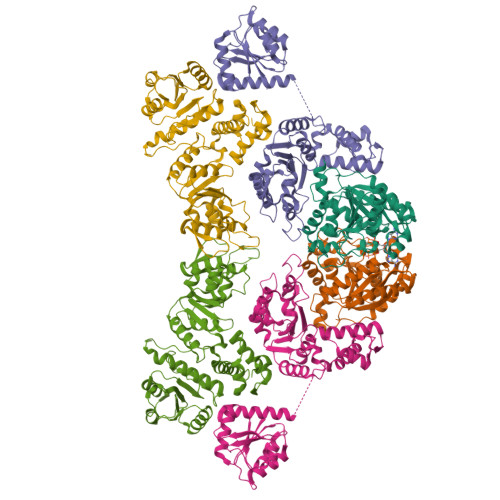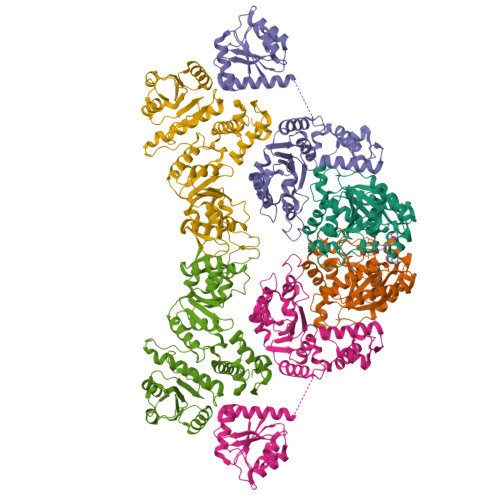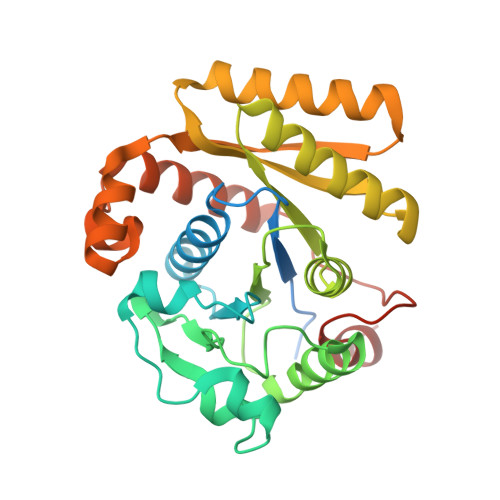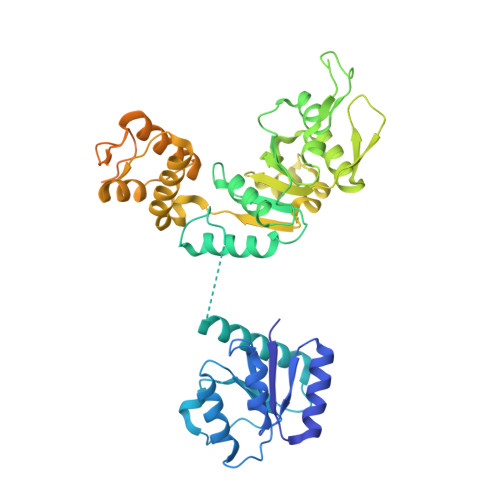Structures of the P. aeruginosa FleQ-FleN master regulators reveal large-scale conformational switching in motility and biofilm control.
Torres-Sanchez, L., Gery Sana, T., Decossas, M., Hashem, Y., Krasteva, P.V.(2023) Proc Natl Acad Sci U S A 120: e2312276120-e2312276120
- PubMed: 38051770
- DOI: https://doi.org/10.1073/pnas.2312276120
- Primary Citation of Related Structures:
8P53, 8PB9 - PubMed Abstract:
Pseudomonas aeruginosa can cause a wide array of chronic and acute infections associated with its ability to rapidly switch between planktonic, biofilm, and dispersed lifestyles, each with a specific arsenal for bacterial survival and virulence. At the cellular level, many of the physiological transitions are orchestrated by the intracellular second messenger c-di-GMP and its receptor-effector FleQ. A bacterial enhancer binding protein, FleQ acts as a master regulator of both flagellar motility and adherence factor secretion and uses remarkably different transcription activation mechanisms depending on its dinucleotide loading state, adenosine triphosphatase (ATPase) activity, interactions with polymerase sigma (σ) factors, and complexation with a second ATPase, FleN. How the FleQ-FleN tandem can exert diverse effects through recognition of a conserved FleQ binding consensus has remained enigmatic. Here, we provide cryogenic electron microscopy (cryo-EM) structures of both c-di-GMP-bound and c-di-GMP-free FleQ-FleN complexes which deepen our understanding of the proteins' (di)nucleotide-dependent conformational switching and fine-tuned roles in gene expression regulation.
Organizational Affiliation:
Université de Bordeaux, CNRS, Bordeaux INP, CBMN, UMR 5248, Pessac F-33600, France.





















